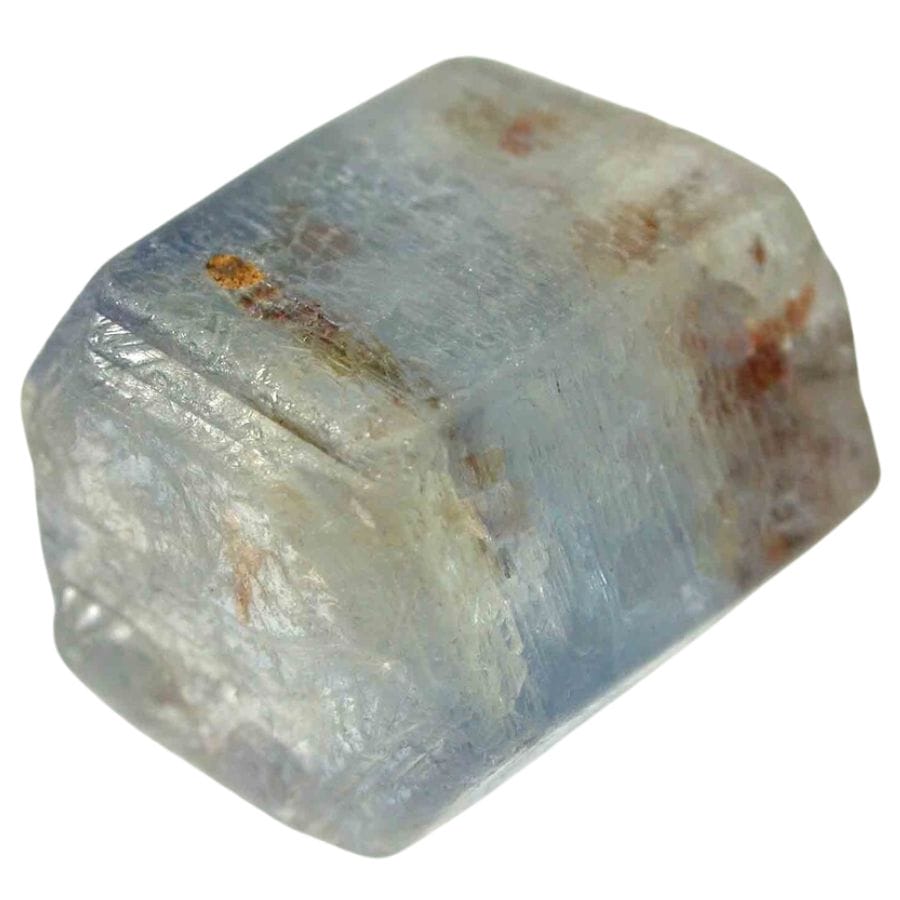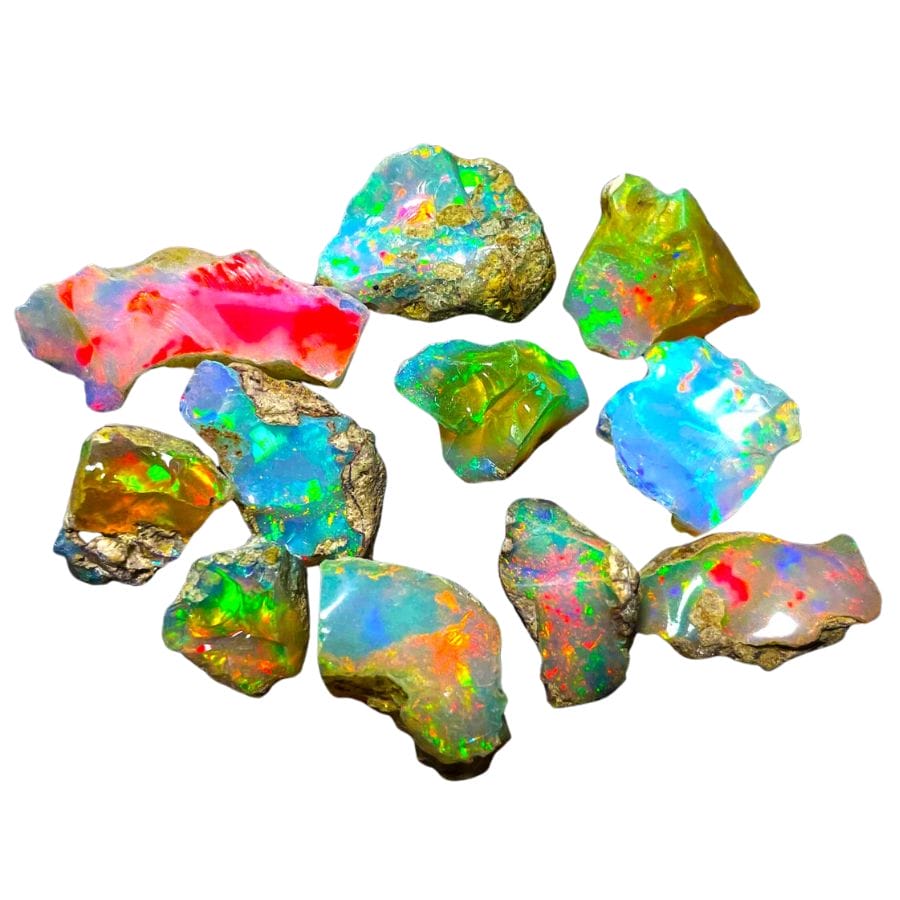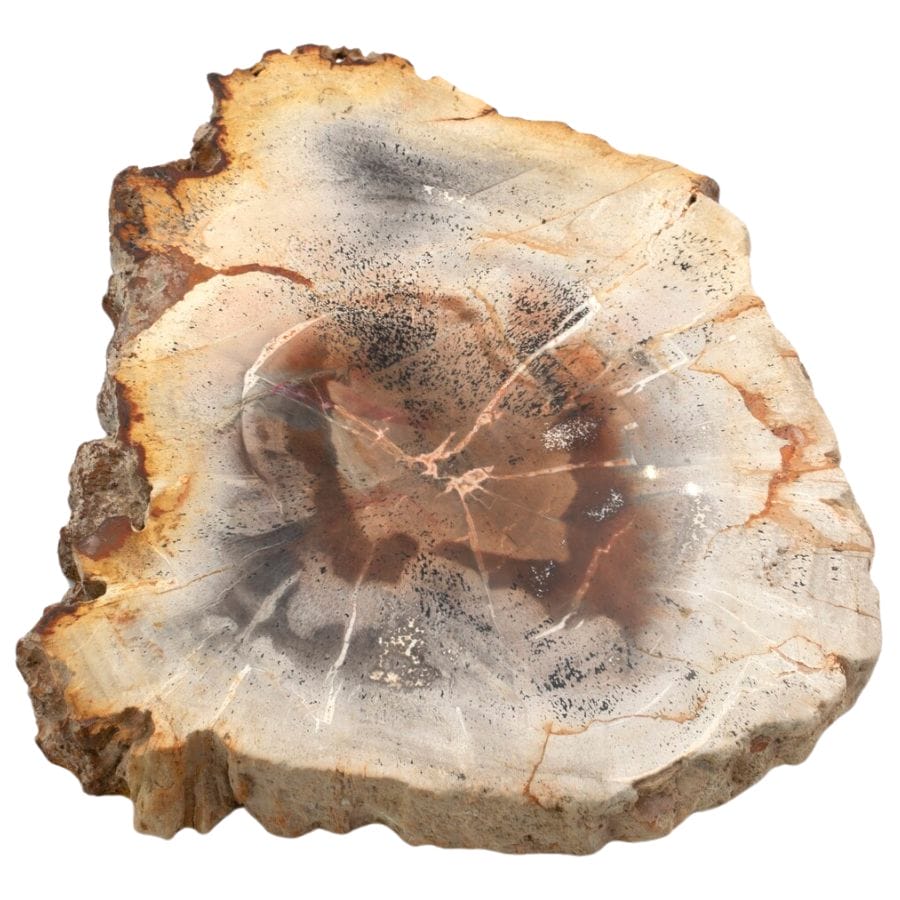Many people are curious about which rocks, minerals, and crystals can safely go into water without getting damaged. Quartz, opal, and garnet are some examples that can handle being submerged without any problems.
Understanding which of these natural beauties can be placed in water is important for anyone who enjoys collecting or using them for decoration. This knowledge helps in maintaining their condition and ensuring they last a long time.
The Various Water-Safe Rocks and Minerals
Some rocks, minerals, and crystals can go into water without any trouble, while others might not do so well. This happens because certain ones can break down, change color, or even crack if they get wet.
These are the rocks and minerals that can tolerate exposure to water:
Quartz

Quartz is made up of silicon and oxygen, two of the earth’s most common elements, bonded together to form SiO2. It scores a 7 on the Mohs scale.
Quartz does not dissolve in water because its molecules are tightly bonded together. The structure of quartz is so strong that water can’t break it apart, keeping it solid even when underwater.
Temperature changes in water don’t really bother quartz; it remains stable whether the water is hot or cold. Even if quartz stays in water for a long time, it doesn’t change much or get damaged, proving that it’s a durable mineral.
Sapphire

Sapphires are made of something called corundum, which is just a fancy name for aluminum oxide. They are super hard, scoring a 9 on the Mohs scale.
The reason sapphires don’t fall apart or dissolve in water is because they’re chemically stable. They can be in water for a really long time and not get damaged
Even if the water’s temperature goes up and down, sapphires are unlikely to experience any damage. Because of this, they’re great for all kinds of jewelry that you might wear swimming or in the shower.
Ruby

Rubies are made of corundum, just like sapphires, but they’re red because of the chromium in them. Like sapphires, they have a Mohs hardness of 9.
Since rubies are made of corundum, they don’t dissolve in water. Their chemical makeup is very stable, so water doesn’t affect them.
This makes rubies perfect for wearing all the time, even in the pool. They can also handle water temperature changes without getting damaged.
Jasper

Jasper is a type of quartz that comes in lots of colors because it has other minerals mixed in. It’s pretty tough, with a hardness of 6 to 7 on the Mohs scale.
Since jasper is mostly made of quartz, it doesn’t dissolve in water. Its structure is stable, so water can’t easily break it down, keeping it solid even if it gets wet.
However, putting jasper in water for a really long time isn’t a great idea, especially if the water is very cold or hot.
These temperature changes might not damage jasper right away, but over time, they could cause problems like cracks if the stone has any small internal fissures.
Agate

Agate is a type of quartz, made of silicon dioxide, and often found with beautiful layers of color. On the Mohs scale, agate scores a 7.
Agate does not dissolve in water because the bonds between its silicon and oxygen atoms are very strong. Water can’t break these bonds, so agate stays solid and keeps its shape underwater.
Changes in water temperature don’t affect agate much; it remains stable in both hot and cold water. However, certain types of agate shouldn’t be submerged in water for too long, especially if they have inclusions of softer minerals.
Opal

Opal is a unique gemstone that’s made of silica and water, which is why it can look so colorful and shiny. It’s not as hard as some other stones, with a Mohs hardness rating of around 5.5 to 6.5.
Solid, genuine opals naturally have water in them, ranging from about 3% to 30% of their makeup. Additionally, their structure doesn’t allow for much water to seep in, so they don’t break down or get damaged in water.
However, doublet or triplet opals, which are composite gemstones made of thin slices of opal bonded to backing materials, should not get wet.
Opals should be careful with sudden changes in temperature, especially if they’re in water. While they can be in water for a long time without problems, quick temperature shifts can stress the stone, potentially causing cracks.
Garnet

Garnet is a group of silicate minerals known for their rich colors and uses in jewelry. With a Mohs hardness of 6.5 to 7.5, garnets are pretty tough.
Garnets don’t dissolve in water because their chemical structure is solid and stable. This means you can rinse them off without worrying about them falling apart or losing their shape.
However, garnets can be affected by being in water for a long time. Water might get into tiny cracks in the garnet, making these cracks bigger over time, or it can wear away any polish it might have.
Additionally, garnet varieties like demantoid have iron in them. Exposure to water can thus affect these types of garnet.
Tourmaline

Tourmaline is a complex mineral that comes in many colors and types, each with its own chemical makeup. It’s pretty hard, with a Mohs hardness of 7 to 7.5.
Tourmaline doesn’t dissolve in water because it’s made of sturdy materials that water can’t break down. This makes it safe for quick rinses.
However, soaking tourmaline in water, especially for a long time, can be risky. Some types of tourmaline, like schorl, have significant iron content that can oxidize in water.
Basalt

Basalt is made mostly of pyroxene and plagioclase feldspar, which are minerals that give it a dark color. It’s pretty strong, with a Mohs hardness of about 5.5 to 6.
Basalt doesn’t dissolve in water because its minerals are stable and don’t easily break down. In fact, it can even be found in the bottom of the ocean or in riverbeds.
Even with changes in water temperature, basalt stays the same. It can be underwater for a long time without getting damaged, which is why it’s used for things like building breakwaters and decorations in aquariums.
Obsidian

Obsidian is a natural glass formed from quickly cooled volcanic lava, making it mostly silicon dioxide. It’s quite hard, with a Mohs hardness rating of about 5 to 6.
Obsidian doesn’t dissolve in water because, as a type of quartz, its structure is too tight for water to break it down. This means it can be rinsed off without the stone losing its shape or size.
However, temperature changes can be tricky for obsidian if it’s in water for too long. Water can get into small cracks in the obsidian, and if it freezes, it could make the cracks bigger.
Flint

Flint is mostly made of silicon dioxide, just like glass, but it’s found in nature. It’s really hard, with a Mohs hardness of 7.
Because flint is so stable and doesn’t soak up water, it doesn’t dissolve when you put it in water. Its chemical makeup keeps it solid and unchanged, even if it stays wet for a long time.
Flint handles changes in water temperature very well, so it doesn’t get damaged if the water gets hot or cold. This makes flint a good choice for things like aquarium decorations or outdoor water features.
Petrified Wood

Petrified wood is what happens when wood turns into stone through a process where its organic material gets replaced by minerals, mostly quartz or silica. It’s pretty hard, having a Mohs hardness of about 7.
This transformation makes petrified wood very stable in water; it doesn’t dissolve because the minerals that have replaced the wood are resistant to water. So, you can put petrified wood in water without worrying about it falling apart.
Petrified wood can handle being in water for a long time, even with changes in the water’s temperature. This means that it can be used in places like aquariums or garden ponds, staying strong and looking good no matter the season.
Granite

Granite is a tough rock made mostly of quartz, feldspar, and mica, giving it a mix of colors and sparkles. It’s known for being hard, scoring between 6 and 7 on the Mohs scale.
Since granite’s minerals are stable, it doesn’t dissolve in water. This stability makes it a solid choice for things like kitchen countertops and outdoor features because it can handle getting wet without falling apart.
Temperature changes don’t really bother granite, even if it’s underwater for a long time. However, if granite has tiny cracks, water getting in and freezing could cause some damage.
Slate

Slate is a type of rock that changes form under heat and pressure, and it’s made up of minerals like quartz, mica, and chlorite. It’s pretty tough, with a hardness of about 6 to 7 on the Mohs scale.
This rock is great in water because it doesn’t soak up much water at all, thanks to its low porosity. That means slate won’t dissolve or break down when it’s sitting in water, keeping it strong and intact.
Even when the temperature of the water goes up and down, slate can handle it. It’s naturally found in places like rivers and lakes, so long-term exposure to water won’t affect it all.


